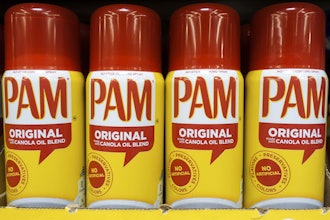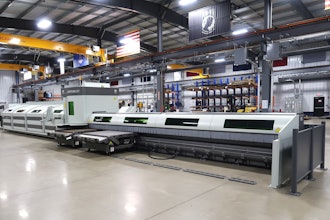A couple of weeks before we start production on a new issue of Food Manufacturing, our staff gets together to talk basically about three things—where we stand right now, where we want to go and how we intend to get there.
This scope of attention deals not only with the financial elements that any business endeavor must broach, but also the quality of our end products, in both print and on the web, as well as the process we take in getting there. The re-occurring challenge for us right now is the same that many of you might be encountering—how to fully embrace the need to continuously improve and, excuse the cliché, take that next step.
I think this can be challenging for both of us due to three primary reasons:
First, you’ve made a number of recent improvements.
Comparing our print and electronic offerings from two years ago would venture a nearly unanimous endorsement of significant improvement. The look is better. The content is better, and we’ve received buy-in from some major advertisers. So we’re very proud of the progress that has been made.
Similarly, I’m guessing if a tour was taken of your facility two years ago and then again today—the improvements would be evident. The stumbling block here, whether your business is publishing or processing, is that continuous improvement is the mantra of the day. It’s about what you’re going to continue to do, not patting yourself on the back for previous accomplishments.
Second, it’s time to be critical of the process.
Sometimes getting where you want to be from a quality perspective means implementing inefficient shortcuts in the production cycle. So now it’s time to go back and analyze not just the outcome, but how getting there can be improved. This can be a frustrating experience because some will not want to mess with a process that has produced the desired result—a result that was not easy to come by and produced excellent feedback.
Therein lays the true challenge for today’s U.S. manufacturers and processors. We’ve never had quality issues, simply efficiency and profitability obstacles that came from an old-school approach to production. Analyzing the process is now necessary in taking that next step towards success.
For us this meant re-evaluating our production schedules and working to get further ahead in terms of planning. For processors it could mean changing a number operational paradigms and implementing greater automation.
Third, now it’s time for the tough stuff.
The initial quality and process improvements are easier in many ways because the impact is simple to understand and quicker to be realized. The “next step” means digging beyond the problem/solution stage and actually finding issues to be resolved.
For us, this meant going beyond the ability to produce a daily newsletter and tracking it to ensure quality open rates and high click-throughs, and delving into how we can improve those already high marks. Do we need to re-design our templates so even more information appears in the preview pane? Do we need to generate content from even more sources, feeds and industry contacts? Should we deploy more video? More blogs?
None of these are problems, but we need to look at them like critical issues to be solved and improved upon in order to reach the next level of success. Similarly, how do you improve quality controls in improving that already low percentage of rejects? How can turnaround times be made even quicker than the industry best level that you currently provide?
Everyone wants to take the next step in improving their offerings, approach and results. We all want to be better. The tough part is that improvement doesn’t always stem from the things we see to fix, but often from finding those things aren’t broken yet.






















